A 10-day trip to Puglia (Lecce, Ostuni, Brindisi)
A few months ago, I went on a 10-day trip to South Italy. After landing in Bari, the capital and the largest city of Puglia, I visited the inland towns of Alberobello and Locorotondo, as well as the seaside Monopoli and Polignano a Mare. I then visited Matera, a city located not in Puglia, but in the neighbouring region of Basilicata. After staying there for a couple of days, I took the bus to Lecce and returned to Puglia.
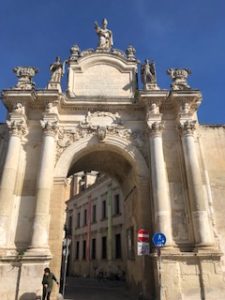
Here’s the final part of the itinerary I would recommend, with tips (as always) for where to go, and more importantly where (and what) to eat and drink.
Day 6 – Lecce
Matera to Lecce
Commonly referred to as the ‘Florence of the South’, Lecce is the 5th largest city in Puglia and well worth a visit. By bus, Lecce is about two hours away from Matera (alternatively, you can take the train to Bari, and from there take another train to Lecce). I arrived in Lecce mid-morning to make the most of my 2-day stay. I spent the rest of the first day exploring the centro storico (on foot, of course).
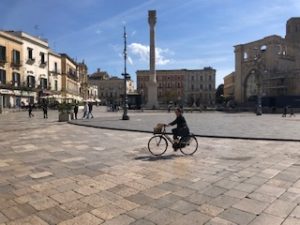
A walking tour in Lecce: from the Piazza Sant’Oronzo to Porta Napoli
I started my walking tour from the Piazza Sant’Oronzo. I admired the 29-meter-tall Colonna di Sant’Oronzo, that bears the name of the city’s patron saint and was given to Lecce by the city of Brindisi. Next to it, there’s the 2nd-century Amfiteatro Romano. From there, I continued to Via Templari and had lunch at the Vico dei Bolognesi Bistrot, a charming but rather over-priced restaurant.
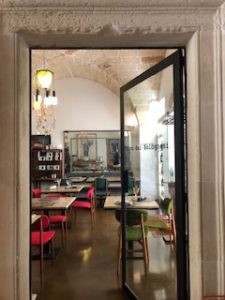
Afterwards, I continued on Via Umberto (the continuation of Via Templari) passing right in front of the Basilica di Santa Croce, one of the most important churches in the city. The combined ticket allows entry not only to the Basilica, but also to the Duomo (Cattedrale di Maria Santissima Assunta e Sant’Oronzo), the Palazzo del Seminario, the Museo di Arte Sacra (Museum of Sacred Art) and the churches of Santa Chiara and San Matteo.
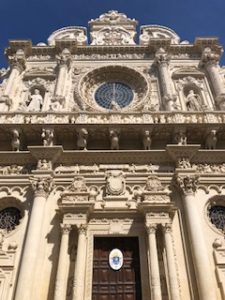
The Basilica di Santa Croce is nestled between the Museo Ebraico, a museum housed at a former synagogue that explores the Jewish history of medieval Lecce, and Mamma Elvira, a renowned enoteca. Instead of wine, however, I had an ice cream at Baldo Gelato, on Via Idomeneo, and continued my walking tour. A few steps from Mamma Elvira and Baldo Gelato, there’s the Piazzetta Chiesa Greca and the Church of Saint Niccolò ‘dei Greci’. Opposite the church, there’s the Cocktail Bar Saloon Keeper 1933.
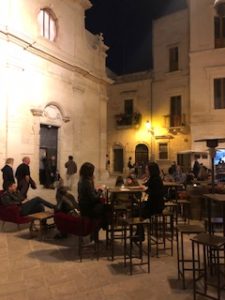
I continued on Via Principi di Savoia. On my right, I saw the Church of Saint Mary ‘della Provvidenza’. I walked further on Via Principi di Savoia and arrived at the Porta Napoli, one of the three gates to enter Lecce’s centro storico. In front of me, the Piazzetta Arco di Trionfo and an obelisk. I would later come back here to dine at the pizzeria La Succursale.
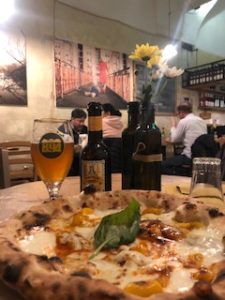
A walking tour in Lecce: from Porta Napoli to Porta Rudiae
From Porta Napoli, I continued on Via Giuseppe Pulmieri, a street with some charming restaurants, and walked all the way to the Piazza del Duomo and the Cattedrale di Maria Santissima Assunta e Sant’Oronzo. Standing next to the Cathedral, the Campanile del Duomo, a 70-meter-tall bell tower. On the opposite side of the Piazza del Duomo, the Palazzo del Seminario.
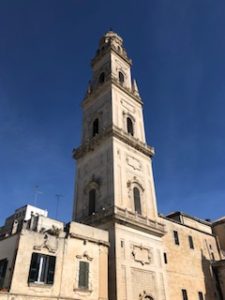
Afterwards, I continued on Via Giuseppe Libertini, turning left from the Piazza del Duomo. Passing in front of the Chiesa di Sant’Anna (on my left), I walked to the Basilica del Rosario e di San Giovanni Battista (also on my left). The latter was under restoration at the time of my visit, but it was possible to enter (for free). A few steps from the Basilica, I saw the Porta Rudiae, the second gate to enter Lecce’s centro storico.
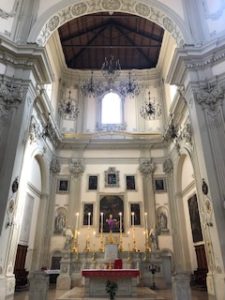
A walking tour in Lecce: from Porta Rudiae to Porta di San Biaggio
From Porta Rudiae, I walked back the way I came and continued on Via Vittorio Emmanuele (the continuation of Via Libertini). On my left, I saw the Chiesa di Santa Irene, but I continued ahead for another minute, before turning left on Via Imperatore Augusto. I walked to the Piazzetta Castromediano and the Chiesa del Gesù.
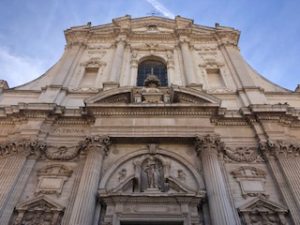
From there, I walked back on Via Imperatore Augusto towards the Chiesa di Santa Chiara, and then on Via Federico d’aragona (the continuation of Via Imperatore Augusto) towards the Chiesa di San Matteo. The latter was under restoration at the time of my visit. I then continued on Via dei Perroni all the way to the Porta di San Biaggio, the third gate to enter Lecce’s centro storico. In front of me, the Piazza d’Italia and a war memorial.

A walking tour in Lecce: from Porta di San Biaggio to the Piazza Sant’Oronzo
From Porta di San Biaggio, I continued on Via Becchiere Vecchie. A couple of minutes later, I saw the Chiesa della Madre di Dio on my right, then walked on Via Carlo Russi and Via Roberto Caracciolo (the continuation of Via Carlo Rossi). Another couple of minutes later, I arrived at the Chiesa del Carmine.
I then walked back on Via Roberto Caracciolo and turned left on Via Benedetto Carioli. On my left, I saw the Piazzetta di Giosuè Carducci. I turned left on Via Guglielmo Paladini, where I would come back later for a coffee at Pop Cafe on Via Guglielmo Paladini and a cocktail at Quanto Basta. I walked on the side of the Duomo, then turned right on Via Degli Ammirati. Several restaurants caught my attention: 00 Doppiozero, Moro, and La Tipografia.
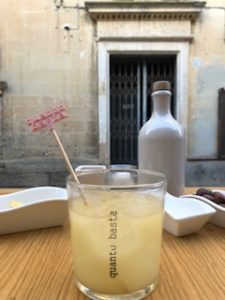
I continued further on Via Degli Ammirati and saw the Chiesa di Santa Chiara once again (this time on my right). After the Piazza Vittorio Emmanuele, I turned left on Via Giuseppe Verdi and found myself where I had started my walking tour a few hours earlier.
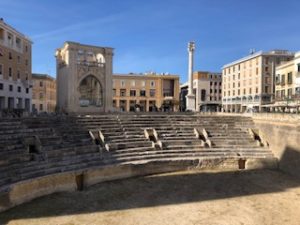
Day 7 – Lecce
I started my day with a coffee, a pasticciotto (a traditional breakfast pastry filled with custard cream) and a rustico (puff pastry filled with mozzarella, tomato and béchamel) at Cotognata Leccese.
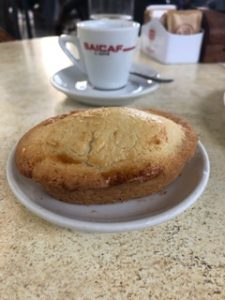
Next, I intended to visit the Museo Archeologico ‘Sigismondo Castromediano’, however it was closed at the time of my visit, as it doubled as a Covid-19 vaccination centre. Although there were several other museums I could’ve visited instead, I decided to simply wander around the city at a leisurely pace.
“Lecce is, after Naples, the most beautiful and greatest city of the kingdom … streets are wide and well-paved; churches, as well as houses, are built with a local white stone. Once quarried, this stone is soft and you can easily decorate it, as if it was wax…”
Spring 1767 – the future young diplomat of the court of Frederic II of Prussia, Johann Hermann Von RIedesel, baron of Eisenbach.
Later, I had a light lunch at La Cucina di Mamma Elvira. I then headed back to Via Guglielmo Paladini, to enjoy a caffe Leccese (an iced espresso with a splash of almond milk) at Pop Cafe and a cocktail at Quanto Basta. For dinner, I headed to the pizzeria La Succursale, a few steps away from the Porta Napoli.
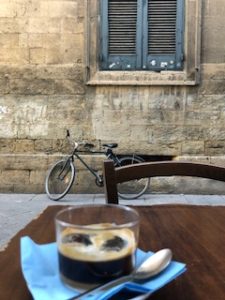
Day 8 – Ostuni
Ostuni is an inland town, home to 30,000 inhabitants. Standing out is the centro storico, a hilltop citadel fortified by ancient walls that reminded me of some Greek islands. Commonly referred to as ‘the White Town’ (La Città Bianca in Italian), Ostuni is about 40 minutes away from Lecce by train. Both the train station and the hotel where I stayed are outside of the town. I therefore had to rely a lot on taxis and lifts. I would recommend staying in or within walking distance from the centro storico instead (unless you can afford to stay in the Masseria Il Frantoio).

After settling in the hotel, I spent the first day walking around the white-washed centro storico. Piazza della Liberta is a good starting point for a walk. I started from the Chiesa di San Francesco d’Assisi, continued to the Cathedral (Basilica concattedrale di Santa Maria Assunta), and then simply wandered around the labyrinthine alleyways of the centro storico.
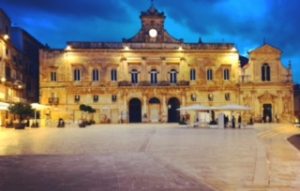
Coffee & More is a perfect place for an alfresco meal. Several other restaurants looked as appealing, and so did some bars.
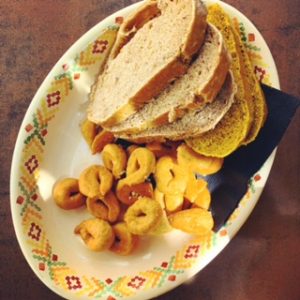
In the evening, I went for dinner at the Masseria Il Frantoio, a 10-minute drive from Ostuni. Generally speaking, a masseria is a fortified farmhouse commonly found in the Apulian countryside and typically built in the 16th century. In Il Frantoio there is a restaurant, where I had an 8-course dinner paired with Apulian wines of course, but also a small luxury hotel.
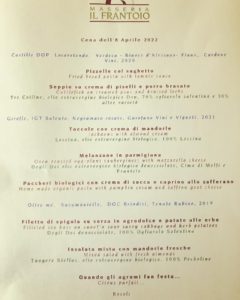
Day 9 – Cisternino
Having already explored Ostuni the previous day, I decided to visit nearby Cisternino. This charming small town is located in Valle d’Itria, not far from Locorotondo, which I’d already visited a few days prior. Cisternino is less than a 20-minute drive from Ostuni. I would strongly advise against taking the train, as the train station is about 10 km away from Cisternino, and getting a taxi from there to the town is much trickier than it sounds. Instead, I would suggest taking a bus or a taxi.
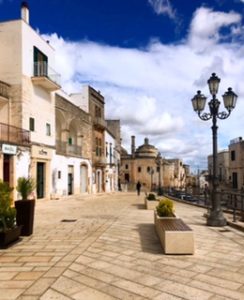
After walking around the small centro storico, I had lunch at the Taverna della Torre, followed by gelato at Sandrino and hot chocolate at Chocolab Pasticceria Cioccolateria Artigiana. Both are located at the Piazza Vittorio Emanuele, in the heart of the centro storico. Needless to say that I was so full afterwards, that I skipped dinner that day.
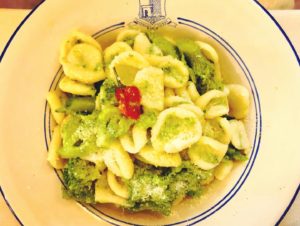
Day 10 – Brindisi
The 7th largest city in Puglia (with a population of 87,000 inhabitants), Brindisi is a major port for trade with Greece, as well as the Middle East. It is also home to one of the two main airports in Puglia. Brindisi Airport, also known as Papola Casale Airport or Salento Airport, is located only 6 km away from the city centre.
I spent a couple of hours exploring the city centre, making my way from some very narrow streets to wider palm-lined ones. Among the sights, there is an ancient Roman column still standing tall at almost 19 metres, on the top of the Virgil staircase overlooking the waterfront. The column was one of a pair that marked the end of the Appian Way, the main road between Rome and southern Italy. The other one, the Colonna di Sant’Oronzo, has been donated to the city of Lecce.
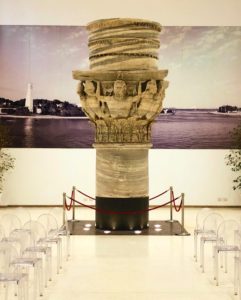
A few steps away from the column, there’s the Duomo di Brindisi (Basilica della Visitazione e San Giovanni Battista). The original building was built almost a thousand years ago, but was destroyed by an earthquake three hundred years ago. From there, I walked to the Chiesa di Santa Teresa and then visited the former court of Assize (which houses the original capital of the Roman column to protect it from the sea salt erosion) and the adjoining Granafei-Nervegna Palace. Last, I also visited the beautiful church of Santa Maria degli Angeli.
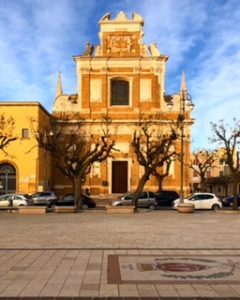
I had my last meal at Trattoria Pantagruele, on Via Salita di Ripalta (closed on Saturday afternoons and all day on Sundays). Nearby Retrogusto seemed like a nice place for a drink, but sadly I didn’t get a chance to visit. Perhaps next time I’m in Brindisi…
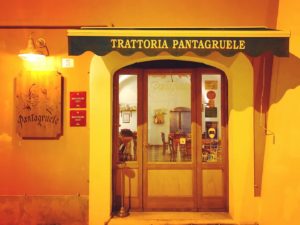
What to eat in Puglia
I’ve already mentioned the breakfast pastries pasticciotto and rustico, the latter is very typical of Lecce. Taralli are crackers similar in texture to breadsticks; they are usually served as a welcome snack in restaurants. Orechiette is a type of pasta typical of Puglia. Very typical is the orecchiette con le cime di rape (orecchiette with broccoli), whereas orecchiette con braciole (orecchiette with beef rolls) is typical of Bari. Fave e cicorie (broad beans purée with chicory) is a popular appetiser in Puglia, while burrata and caciocavallo are popular types of locally-produced cheese.
Where to stay in Lecce
I stayed at Vittoria Luxury House. Not as high-end as the Pollicastro Boutique Hotel or the Vico dei Bolognesi per Palazzo Personè, it was a great (and much more affordable) choice nonetheless.
Where to stay in Ostuni
As mentioned, I would recommend staying in or within walking distance from the centro storico instead (unless you can afford to stay in the Masseria Il Frantoio).
Where to stay in Brindisi
If you have an early-morning inbound flight, I would recommend staying at Hotel Executive Inn in Brindisi. Located in the city centre, it is a 10-minute walk from the train station. From there, the airport is a 10-minute bus ride.
Further reading
Check out my previously published posts about Rome, Florence and Verona.
To better prepare for my trip in Puglia, I used the Lonely Planet Italy Travel Guide.
Alex
(the Traveling Psychiatrist)
One Comment
Pingback: